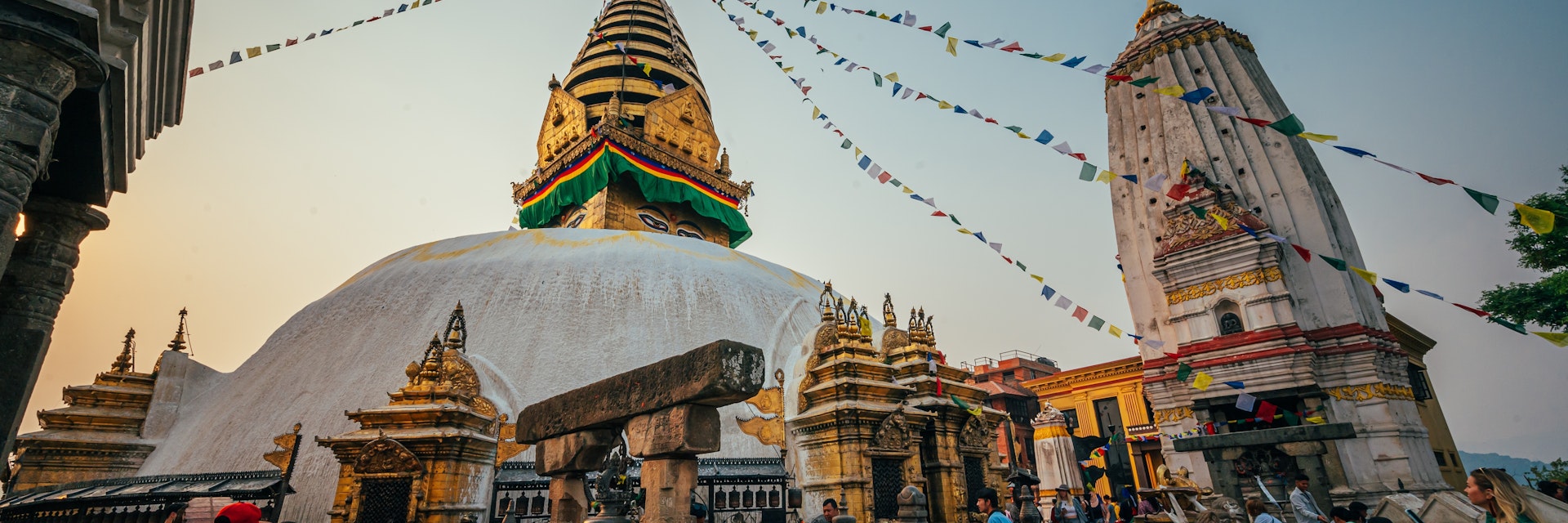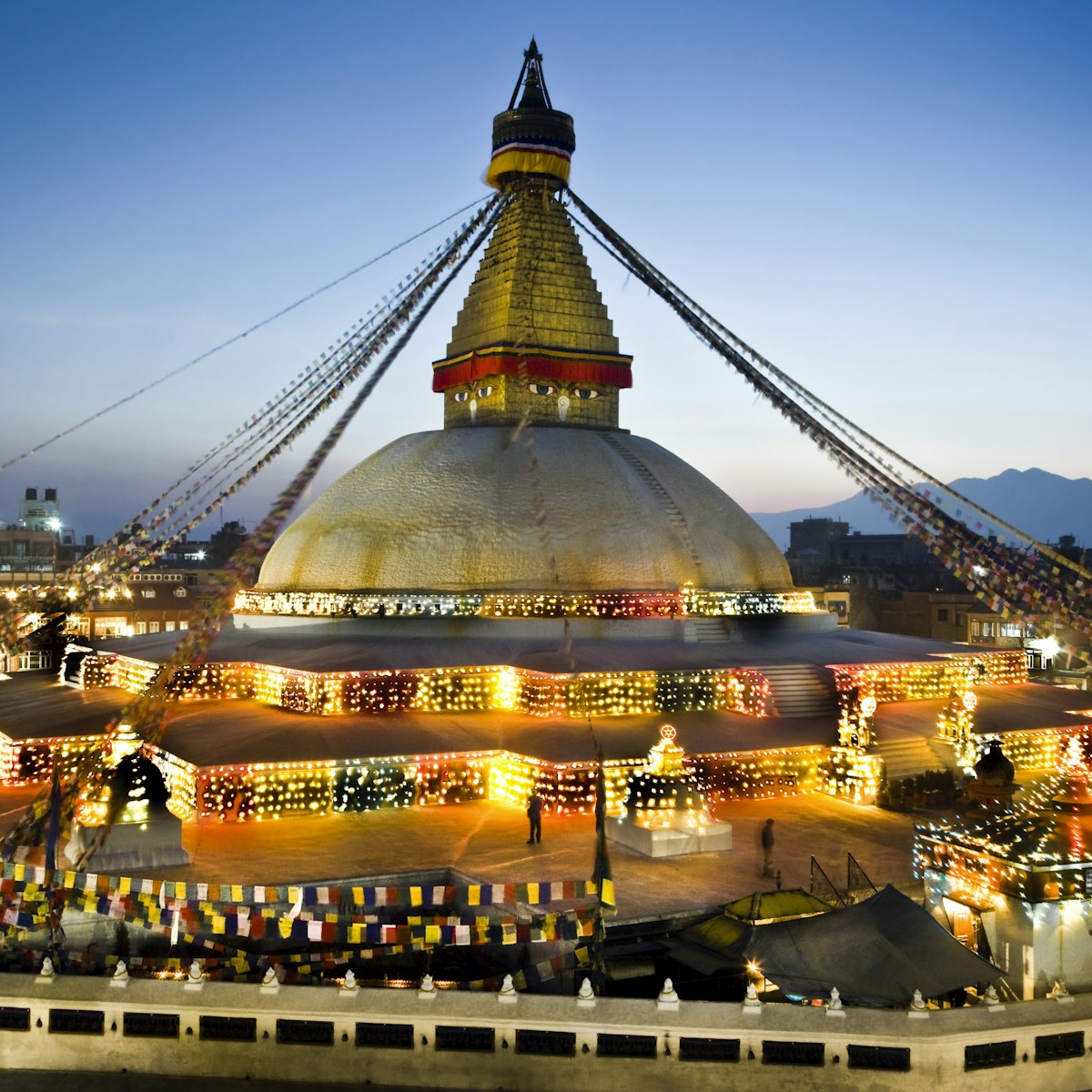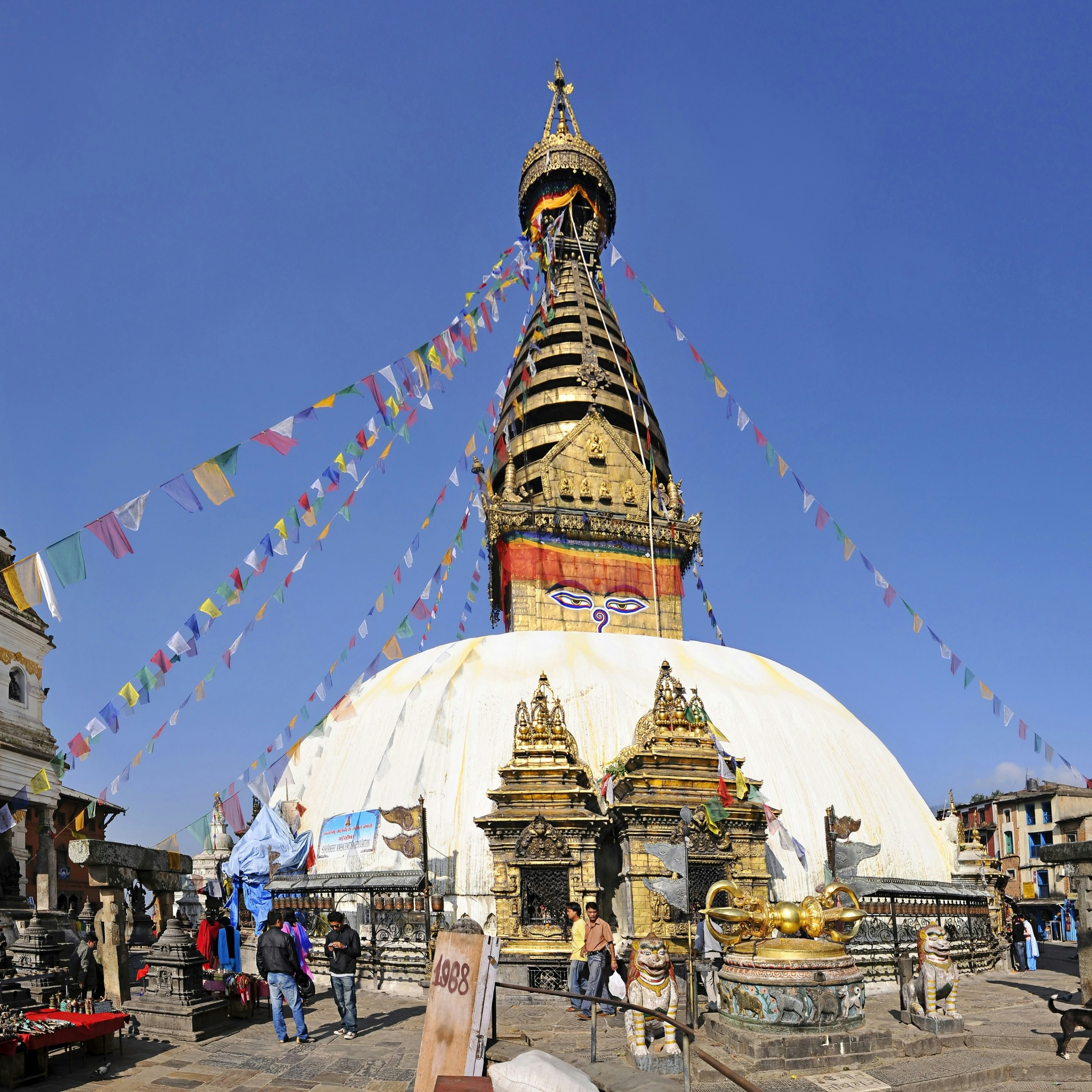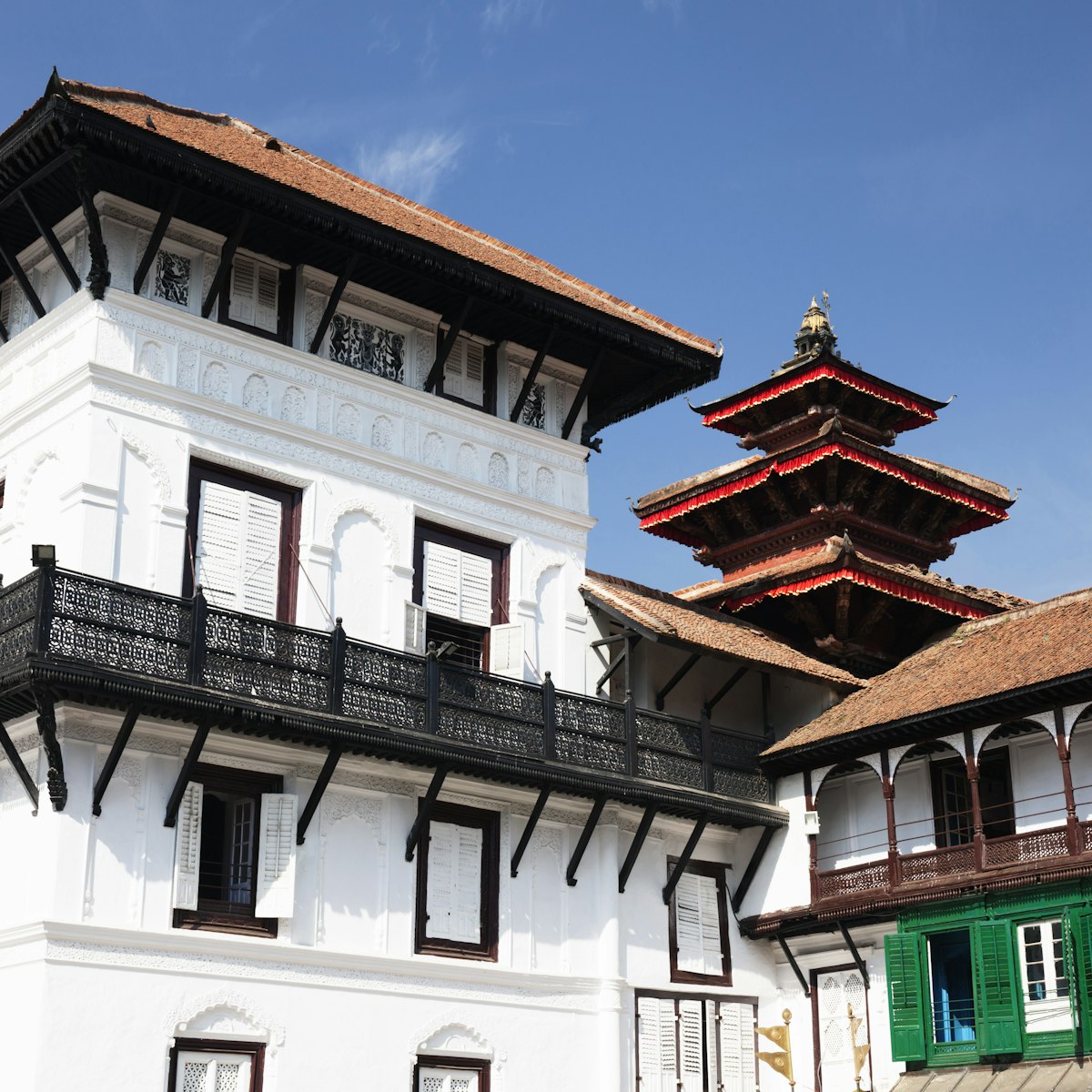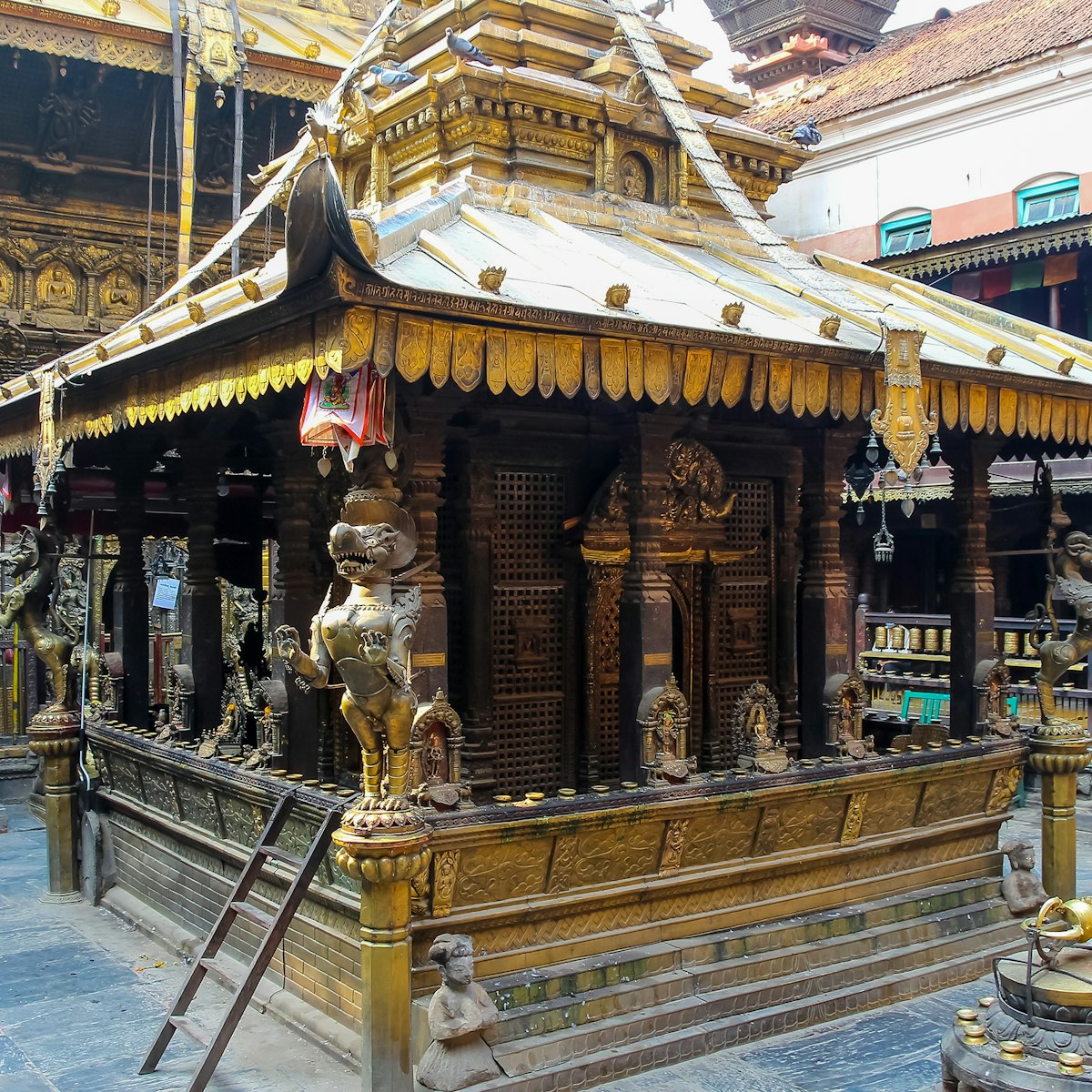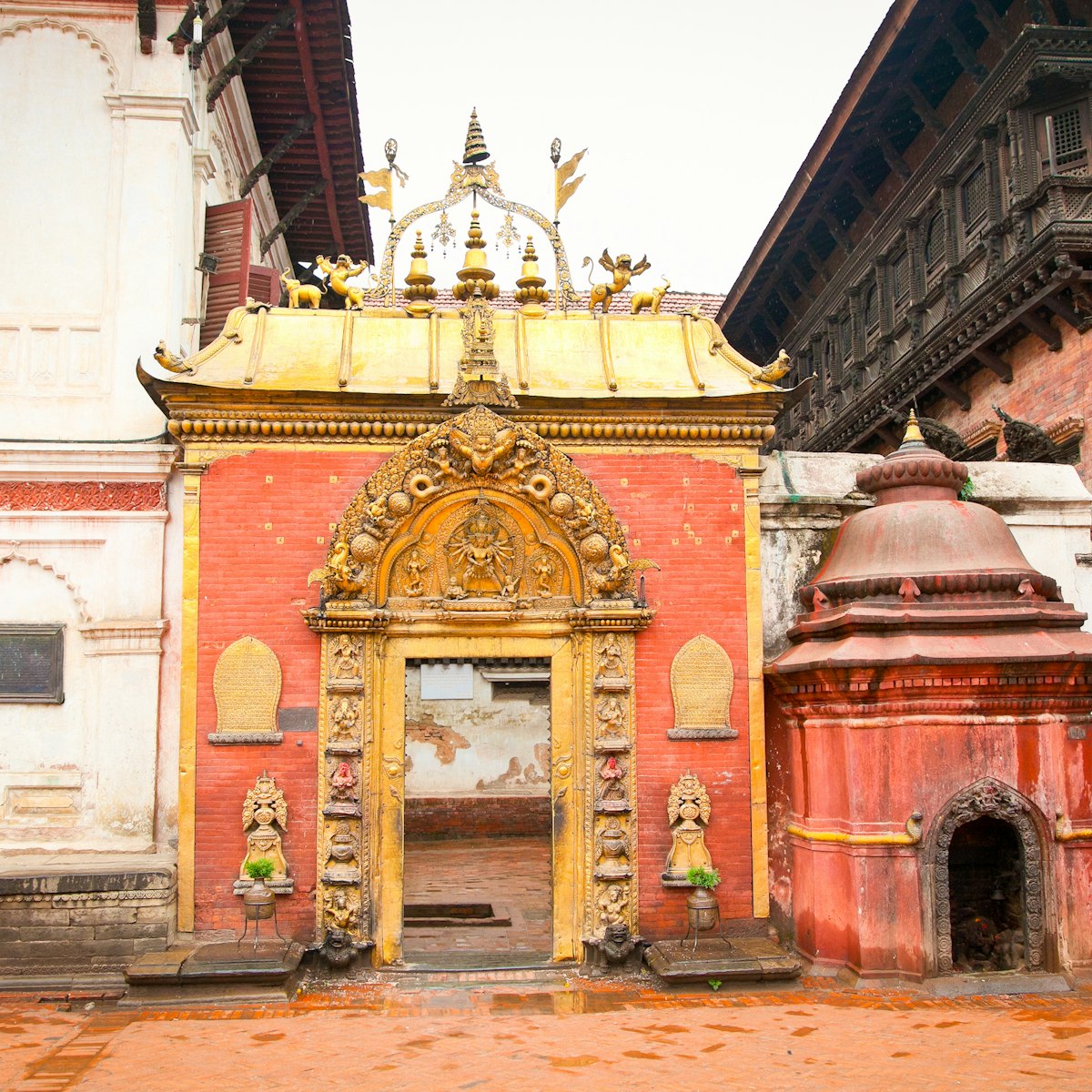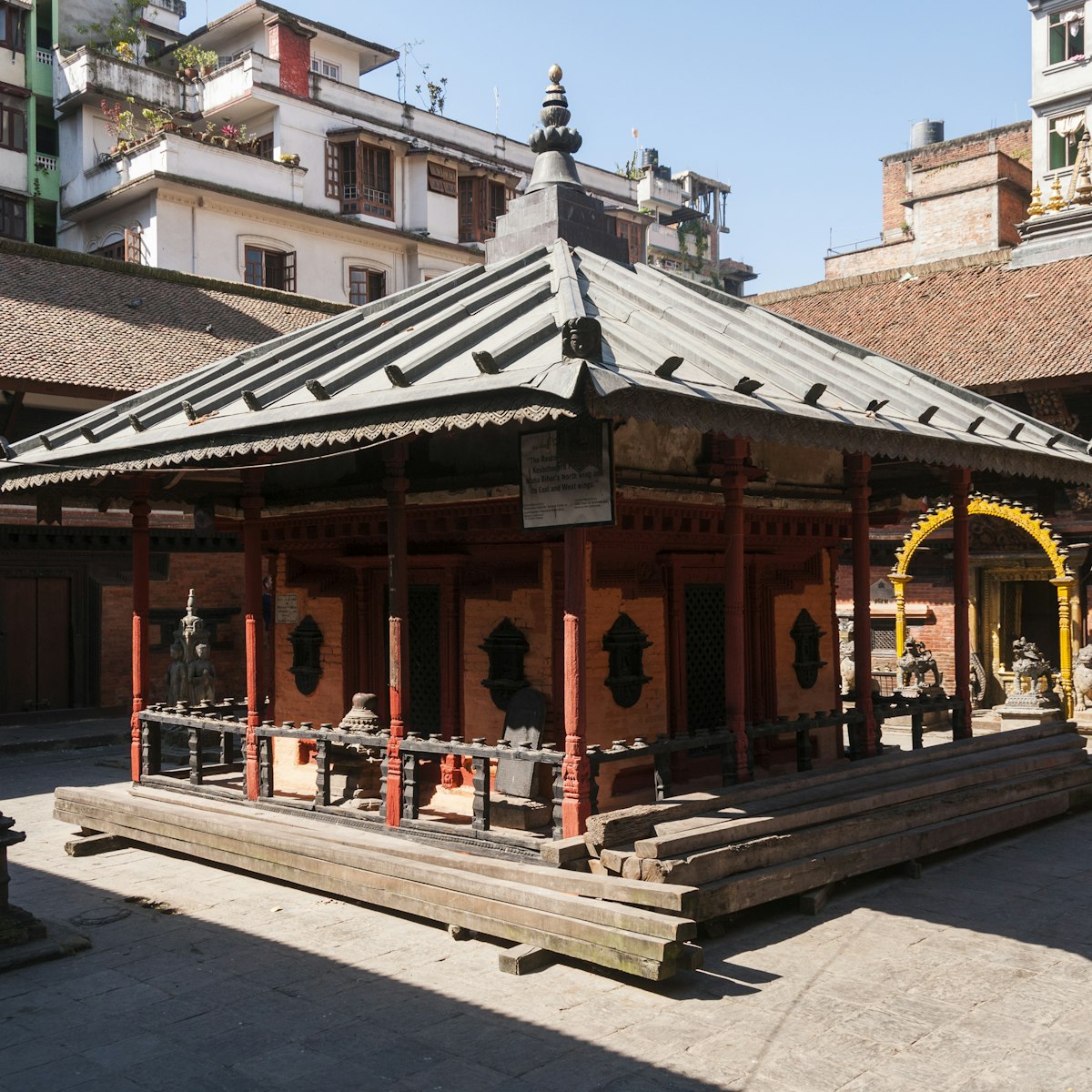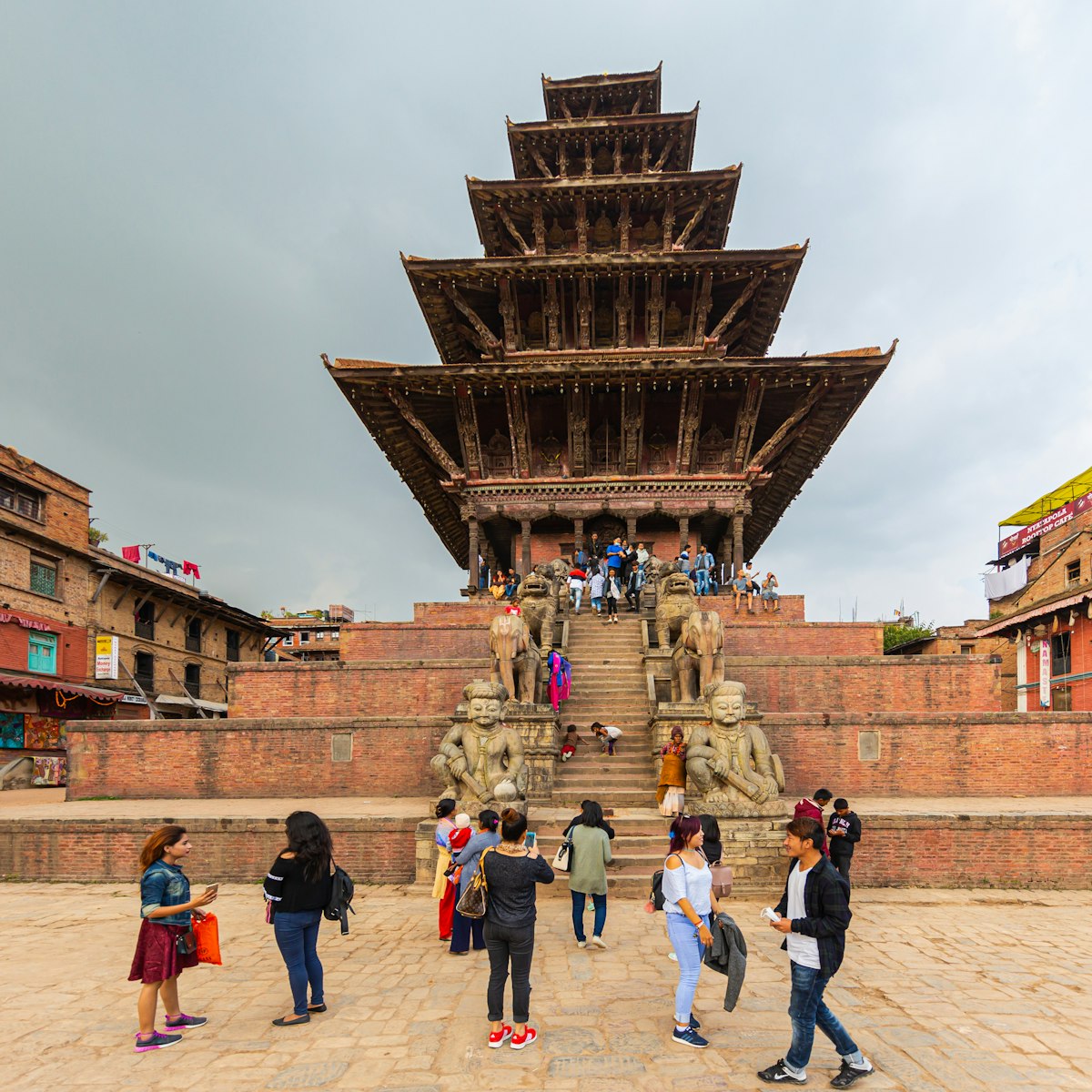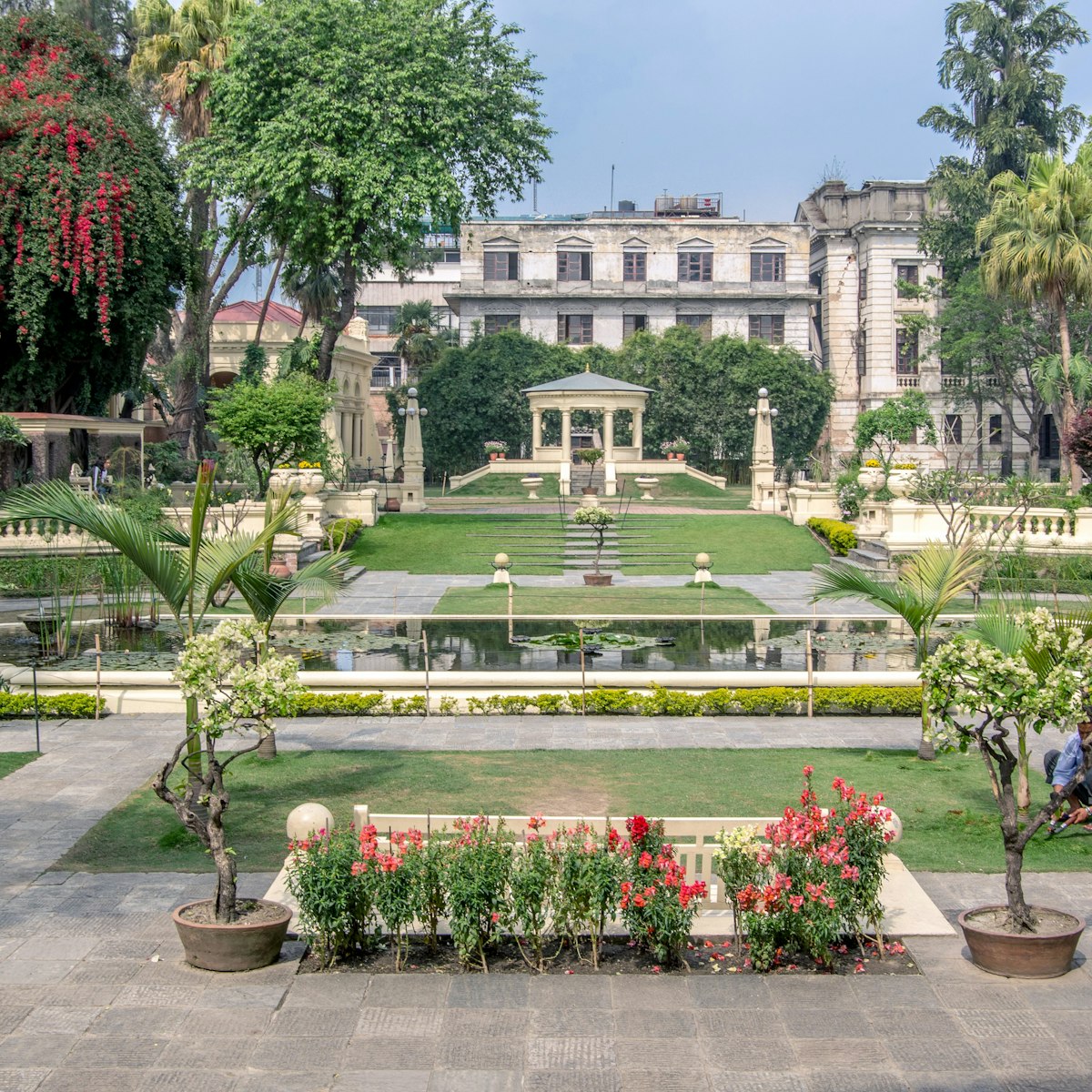The great stupa is surrounded on all sides by a veritable sculpture garden of religious monuments. Several buildings were destroyed by the earthquake and rebuilding will continue for some years, but it's still a charming place to explore.
At the rear of the stupa is a small, poorly lit museum of Buddhist statuary. The adjacent Kagyud-school Dongak Chöling gompa was badly damaged by the earthquake and is currently being rebuilt.
North of the pilgrim shelter is the golden pagoda-style Hariti (Ajima) Temple, with a beautiful image of Hariti, the goddess of smallpox. This Hindu goddess, who is also responsible for fertility, illustrates the seamless interweaving of Hindu and Buddhist beliefs in Nepal.
On the west side of the stupa are two figures of the goddess Tara, attached to stone columns. The White and Green Tara are said to symbolise the Chinese and Nepali wives of King Songtsen Gampo, the first royal patron of Buddhism in Tibet, and are also female consorts to two of the Dhyani Buddhas.
Northwest of these statues is a garden of ancient chaityas, and at the back of this group is a slick black statue of Dipankara, carved in the 7th century. Also known as the ‘Buddha of Light’, Dipankara is one of the ‘past Buddhas’ who achieved enlightenment before the time of Siddhartha Gautama, the historical Buddha. Also note the black chaityas set atop a yoni – a clear demonstration of the mingling of Hindu and Buddhist symbology.
Back at the northeast corner of the complex, the Buddhist temple known as Shree Karmaraja Mahavihar became structurally unsound after the earthquake and was carefully taken down following a ritual prayer ceremony, but devotees hope to eventually raise a new temple on the site.
Symbols of the five elements – earth, air, water, fire and ether – can be found around the hilltop, though several were damaged by the earthquake. Behind the newly rebuilt Anantapura temple are shrines dedicated to Vasupura, the earth symbol, and Vayupura, the air symbol. The Nagpura, the symbol for water, is a stone set in a muddy pool just north of the stupa, while Agnipura, the symbol for fire, is the red-faced god on a polished boulder on the northwestern side of the platform. Shantipura, the symbol for the sky, is north of the platform, part of the damaged Shantipura building.
